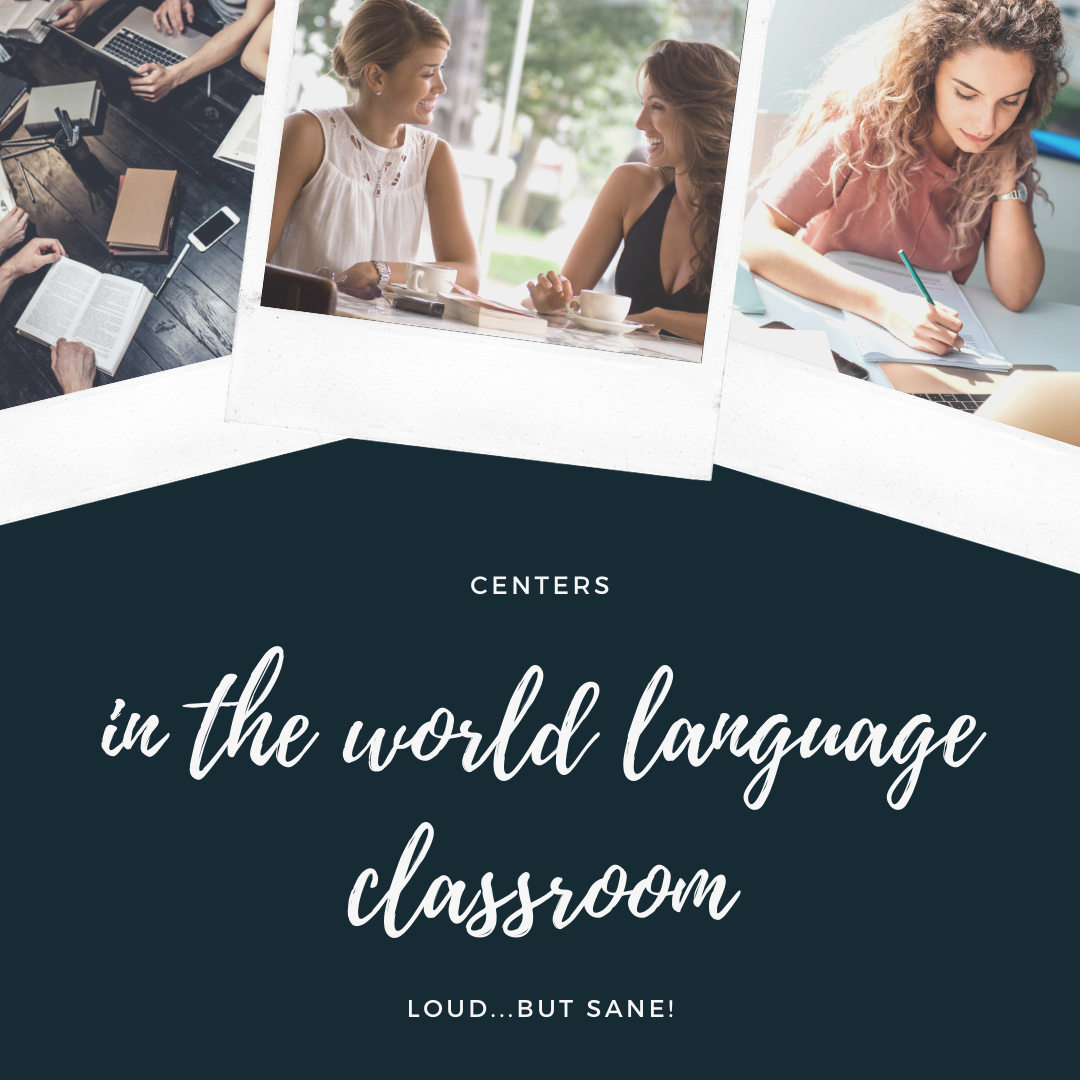
Centers: The loudest, most sane day in your class
Share
I know...oxymoron, right? Loud but sane? We’ll explain…
Centers are nothing new. They are the staple of elementary classrooms, especially when those angel teachers are doing reading assessments or working one on one with their students.
However, centers in the World Language classroom are excellent for accomplishing a number of tasks. These are our favorite things about using centers in class.
ONE - ON - ONE time: We at MesaMima are accustomed to 36-40 students in each class, from Spanish 1 to AP. It’s crazy for the teacher, for output and for language acquisition, so this is a way that we are able to carve out time to sit and work with a small group of our kids. When tasked with a number of activities, we can give just a few kids our time to complete a feedback loop of an interpersonal or presentational task or to help students with gaps in their learning.
MULTIPLE MODES: You can provide activities that work multiple modes that keep your kids moving. The transitions between centers are, somehow, quick and relatively seamless. There are days where the materials that we use seem to keep them in their seats the entire period. Not cool. So, moving between centers gives your kids the chance to get up, move and reset. It’s almost like a brainbreak. Speaking of brainbreaks, try adding one in to each transition for fun!
FOCUS ON ONE TOPIC: In lots of our units, working a subtheme can take multiple days, but centers allow you to focus on the topic with multiple activities that interest your students without seeming like overkill. Alternatively, centers are a great way to reinforce multiple topics in one day. For example, in our medioambiente unit, we put together centers that review multiple topics: calentamiento global, desechos plásticos, energia sostenible, y sobrepoblación.
SELF REGULATION: We all have that student who, no matter how clear your instructions and explicit your model, ask the least favorite teacher question: “wait...what are we doing?” We find that centers, although they require significant pre-planning, are an excellent way to train students to use their resources to understand the instructional material.
UNIVERSAL DESIGN: In centers, your students can make choices or visit certain centers that align with their skill level, their best demonstration of the modes or their interest. In other words, you can plan for activities that you know certain students may need or want, and offer those options. For example, in an interpretive center, some students may opt for a video and others may opt for an infographic.
TEACHER TIME: There are certain times of year that, even when we dedicate time after school or on the weekends, there is just not enough time. So, centers can provide much needed time for entering quarter grades, grading larger assessments, etc, that can’t seem to get done otherwise. Simply start the centers, walk through to monitor, and set a timer for each round, and take a few minutes to get some work done while they are super productive.
Some things to keep in mind:
- Group creatively - some kids should not be together:)
- Switch up the modes to keep learning interesting
- Include a game or fun activity that tricks kids into learning and allows them to have what feels like a break.
- Keep instructions to a minimum in the beginning and explain clearly in each center.
- Display an online timer so kids can see how much time they have left in each center
- Vary the output - answering questions, short answer, one paragraph highlighting only so activities are not heavy in one way
- Vary the input - viewing pictures on a laptop, watching a video, listening to a song or reading are all options so kids aren’t reading in 4 of their 5 centers...they will lose interest fast!
